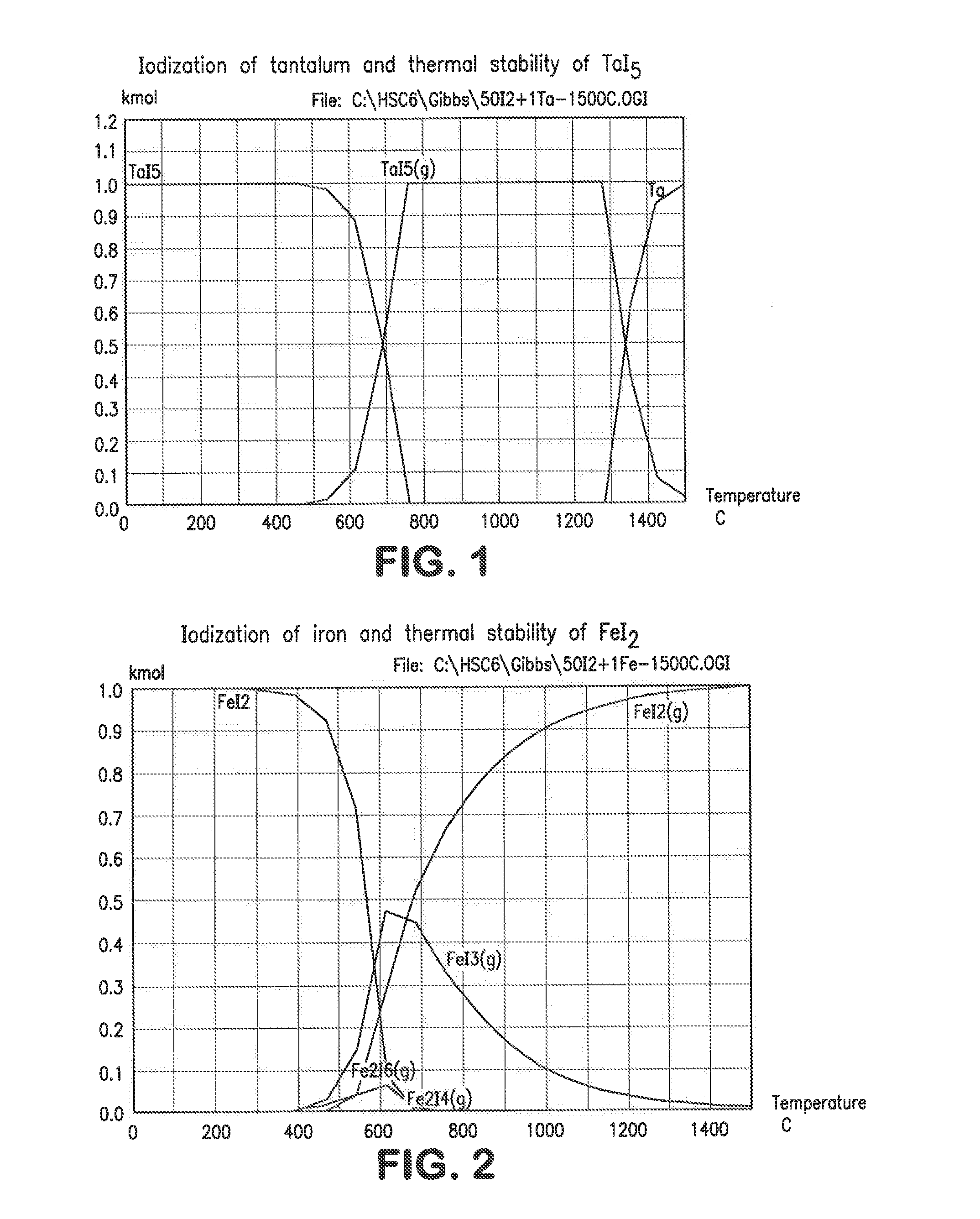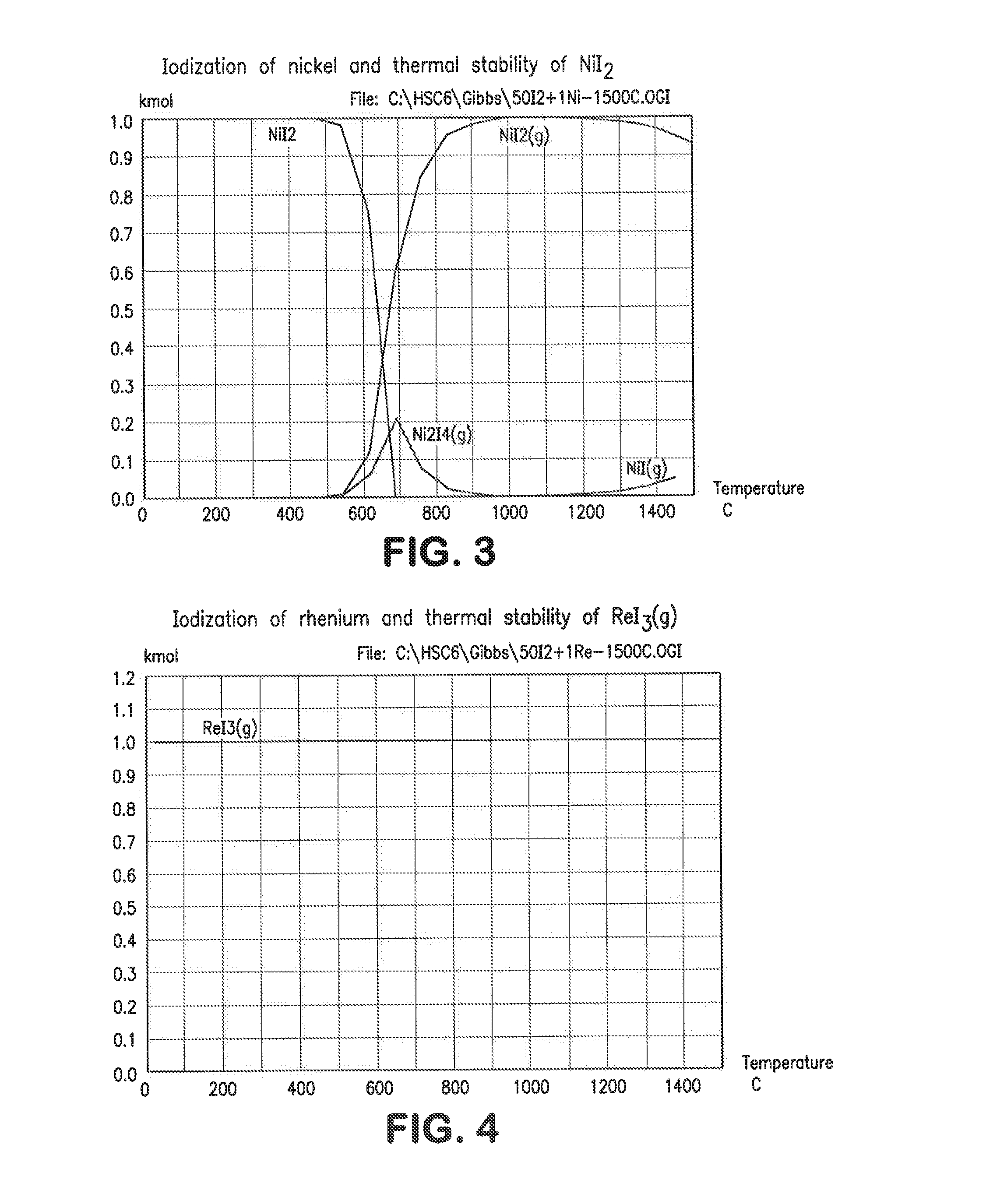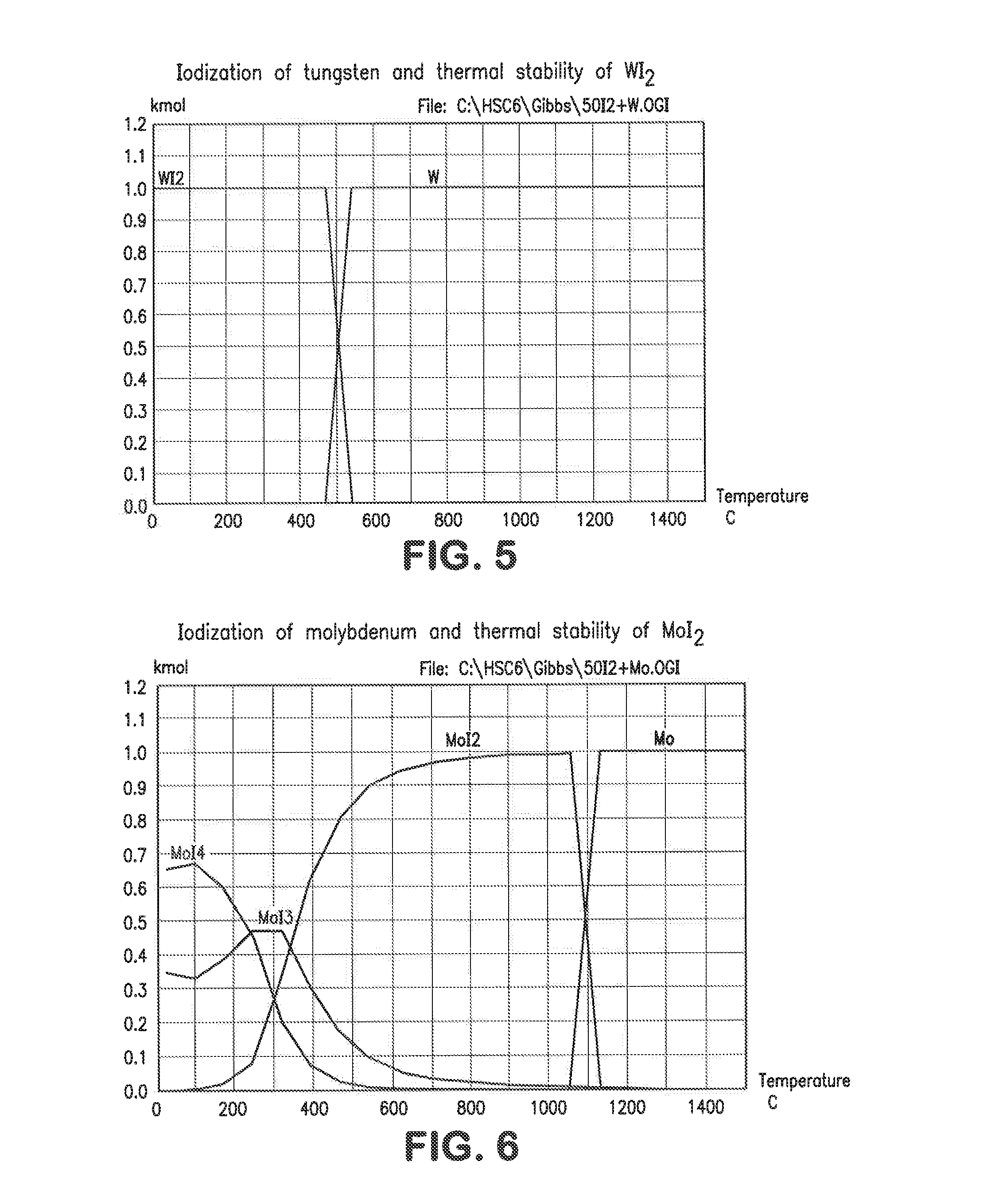Retrieval of high value refractory metals from alloys and mixtures
- Summary
- Abstract
- Description
- Claims
- Application Information
AI Technical Summary
Benefits of technology
Problems solved by technology
Method used
Image
Examples
Embodiment Construction
[0037]1. Iodization
[0038]Iodization of metals of a typical superalloy mix and stability of their iodides was calculated using HSC Chemistry for Windows Software (version 6.1). Initial mole ratio of 50:1 (50I2-1Me) was used in all calculations. The temperature range was 25-1500° C. The equilibrium compositions for Ta—I, Fe—I, Ni—I, Re—I, W—I, Mo—I, Nb—I, Co—I and Zr—-1 systems are shown in FIGS. 1-9. The mole ratio (kmol:kmol) of iodine to metal in the above example was 50 to 1 but other ratios can be employed to good effect. In practice, the iodine can be supplied as a gas, liquid or solid, preferably as a solid, to a furnace also containing the alloy, preferably in a particulate form. It can be seen from FIGS. 1-9 that all these metals (Re, Ta, Nb, Fe, Ni, W, Mo, Co, Zr) can be iodized at low temperatures. All these metal iodides but rhenium iodide are in either solid or liquid phase at low temperatures. Rhenium is volatilized in a form of ReI3(g); therefore it can be separated fro...
PUM
| Property | Measurement | Unit |
|---|---|---|
| Surface area | aaaaa | aaaaa |
| Specific surface area | aaaaa | aaaaa |
| Size | aaaaa | aaaaa |
Abstract
Description
Claims
Application Information
 Login to View More
Login to View More - Generate Ideas
- Intellectual Property
- Life Sciences
- Materials
- Tech Scout
- Unparalleled Data Quality
- Higher Quality Content
- 60% Fewer Hallucinations
Browse by: Latest US Patents, China's latest patents, Technical Efficacy Thesaurus, Application Domain, Technology Topic, Popular Technical Reports.
© 2025 PatSnap. All rights reserved.Legal|Privacy policy|Modern Slavery Act Transparency Statement|Sitemap|About US| Contact US: help@patsnap.com



